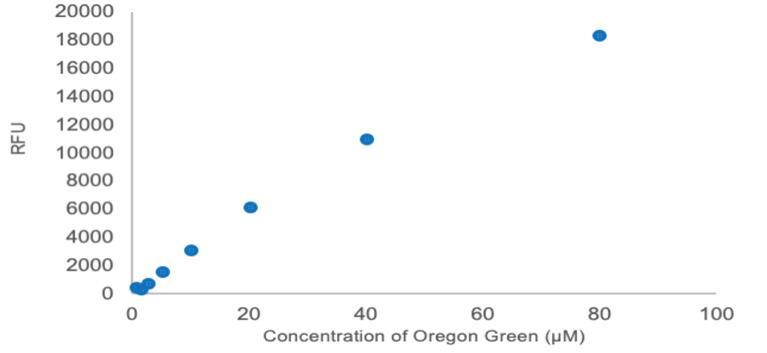
3 minute read
Developmental Improvements on the Forced-Choice Mnemonic Similarity Task in Childhood
Nafessa Lodi
Faculty Sponsor: Dr. Leslie Rollins, Department of Psychology
Abstract
The Mnemonic Similarity Task (MST) assesses memory discrimination. Developmental research using modified study-test versions of the MST suggests age-related improvements in mnemonic discrimination occur in childhood (Ngo, Newcombe & Olsen, 2017; Rollins & Cloude, 2018). Huffman and Stark (2017) employed a forced-choice version of the MST with young and older adults. During retrieval, a target (previously viewed item) was either paired with a novel, unrelated item (A-X), a corresponding lure (A-A′), or an unrelated lure (A-B′). Performance was highest on A-X, intermediate on A-A′, and poorest on A-B′. Relative to younger adults, older adults demonstrated impairment on A-A′ but not A-B′ or A-A′. The forced-choice MST removes differences in task performance that could be attributable to age-related differences in response criteria. Our goal is to examine the development of mnemonic discrimination in childhood using the forced-choice MST. In our study, 4- and 6-year-olds, and young adults complete the forced-choice MST. Participants encode 100 pictures from the Stark Laboratory database. Retrieval consists of 75 trials divided between the A-X, A-A′, and A-B′ formats. Data is reported from 15 young adults, 13 4-year-olds, and 15 6-year-olds. A 3 Test Format x 3 Age Group mixed-model ANOVA analyzed the proportion of correct responses to assess age-related differences of mnemonic discrimination. Consistent with research (Huffman & Stark, 2017; Rollins, Khuu, & Lodi, 2019), individuals performed best on A-X, intermediate on A-A′, and the worst on A-B′, F(2, 80) = 77.79, p < .01. The main effect of age group was significant, F(2, 40) = 39.12, p < .01. Young adults outperformed 6-year-olds; 6-year-olds outperformed 4-year-olds. Test format and age group influenced mnemonic discrimination, F(4, 80) = 3.311, p = .02. On the A-X format, 6-year-olds and young adults performed better than 4-year-olds. On the A-A′ format, young adults performed better than 4- and 6-year-olds. On the A-B′ test format, all age groups were significantly different from one another; young adults outperformed 6-year-olds; 6-year-olds outperformed 4-year-olds. These findings suggest age-related improvements in mnemonic discrimination during childhood and that the processes that underlie the changes may be partially dissociable from those that decline in aging.
Nafeesa Lodi is majoring in Neuroscience and minoring in Leadership Studies. She started working with Dr. Rollins during her freshman year and participated in the 2019 Summer Scholars Program. Nafeesa co-authored a paper that was published in Learning and Memory in 2019, titled, “Encoding variability accounts for false recognition of noncorresponding lures on the forced-choice Mnemonic Similarity Task”.
•
Developmental Improvements on the Forced-Choice Mnemonic Similarity Task in Childhood
Nafeesa Lodi
Faculty Sponsor: Dr. Leslie Rollins
Christopher Newport University

Introduction
• Development of mnemonic discrimination
•
• Forced-choice assessment of mnemonic discrimination
A’), A’ B’
• Goal of the present study:
Results
Participants
•
• Mnemonic Similarity Task (Figure 1)
•
•
•
•
•
•
• A′ test B′ test
F
• F
• F B’ test format.
Discussion and Future Directions
• A’), and the worst when they were paired with non B’) in both
• A’ and A B’ test formats than
Methods
•
•
Acknowledgements
References
• A’ Condition: One image viewed at encoding (the target) and another was a
• B’ Condition: One image viewed at encoding (the target) and another was a non
A’ B’ • A’ B’ Figure
1
Behavioral Neuroscience 131
NeuroImage, 94
Developmental Science

Learning & Memory 26
Learning & Memory
Neuropsychologia 51 Neurobiology of Aging
Trends in Neuroscience, 34
The Threshold Hypothesis: A Statistical Analysis
Mara McFadden
Faculty Sponsor: Dr. Gayle Dow, Department of Psychology
Abstract
Theoretical associations between intelligence and creativity have been a focus of educational research for decades. Termed the “threshold hypothesis”, researchers have concluded that a minimum level of intelligence is required to yield creative products. However, conflicting research has concluded that while creativity and intelligence are positively correlated this association dissipates once IQ exceeds 120. Perhaps this disagreement stems from the method of creativity assessment. In the current study, participants completed an IQ test and two creativity tests assessing convergent and divergent thinking. Both linear and quadratic regressions were conducted between IQ and these two forms of creativity. While there were no linear or quadratic trends found between IQ and convergent thinking, a significant quadratic trend was demonstrated on IQ and divergent thinking. This trend was not present once IQ exceeded 120, thus supporting the threshold hypothesis and a truncated range. Implications and limitations will be discussed.
Mara McFadden is a Junior Psychology major at Christopher Newport University from Richmond Virginia. Mara is very involved on and off campus at CNU, as she is a member of Alpha Phi, a member of the a cappella group The Newport Pearls, and has been working in Dr. Dow’s research lab for the past academic year. Off campus, Mara is a database management intern at Fear 2 Freedom, a non-profit organization founded by Rosemary Trible. Mara’s research in the Psychology department has been focused on a more statistical approach as she hopes to pursue a career in statistics and data analysis.







